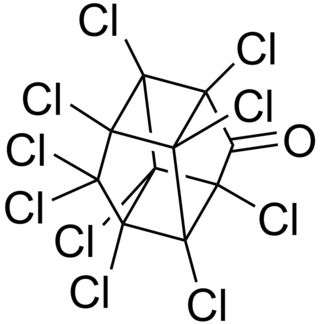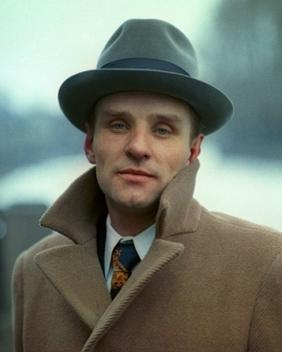
Agent Orange is a chemical herbicide and defoliant, one of the tactical use Rainbow Herbicides. It was used by the U.S. military as part of its herbicidal warfare program, Operation Ranch Hand, during the Vietnam War from 1961 to 1971. The U.S. was strongly influenced by the British who used Agent Orange during the Malayan Emergency. It is a mixture of equal parts of two herbicides, 2,4,5-T and 2,4-D. In addition to its damaging environmental effects, traces of dioxin found in the mixture have caused major health problems and deformities for many individuals who were exposed, and their children.

A cigarette is a narrow cylinder containing a combustible material, typically tobacco, that is rolled into thin paper for smoking. The cigarette is ignited at one end, causing it to smolder; the resulting smoke is orally inhaled via the opposite end. Cigarette smoking is the most common method of tobacco consumption. The term cigarette, as commonly used, refers to a tobacco cigarette, but the word is sometimes used to refer to other substances, such as a cannabis cigarette or a herbal cigarette. A cigarette is distinguished from a cigar by its usually smaller size, use of processed leaf, different smoking method, and paper wrapping, which is typically white.

Formaldehyde ( for-MAL-di-hide, fər-) (systematic name methanal) is an organic compound with the chemical formula CH2O and structure H−CHO, more precisely H2C=O. The compound is a pungent, colourless gas that polymerises spontaneously into paraformaldehyde. It is stored as aqueous solutions (formalin), which consists mainly of the hydrate CH2(OH)2. It is the simplest of the aldehydes (R−CHO). As a precursor to many other materials and chemical compounds, in 2006 the global production of formaldehyde was estimated at 12 million tons per year. It is mainly used in the production of industrial resins, e.g., for particle board and coatings. Small amounts also occur naturally.

Saccharin, also called saccharine, benzosulfimide, or E954, or used in saccharin sodium or saccharin calcium forms, is a non-nutritive artificial sweetener. Saccharin is a sultam that is about 500 times sweeter than sucrose, but has a bitter or metallic aftertaste, especially at high concentrations. It is used to sweeten products, such as drinks, candies, baked goods, tobacco products, excipients, and for masking the bitter taste of some medicines. It appears as white crystals and is odorless.

Chlordecone, better known in the United States under the brand name Kepone, is an organochlorine compound and a colourless solid. It is an obsolete insecticide, now prohibited in the western world, but only after many thousands of tonnes had been produced and used. Chlordecone is a known persistent organic pollutant that was banned globally by the Stockholm Convention on Persistent Organic Pollutants in 2009.

The Merck Group, branded and commonly known as Merck, is a German multinational science and technology company headquartered in Darmstadt, with about 60,000 employees and a presence in 66 countries. The group includes around 250 companies; the main company is Merck KGaA in Germany. The company is divided into three business lines: Healthcare, Life Sciences and Electronics. Merck was founded in 1668 and is the world's oldest operating chemical and pharmaceutical company, as well as one of the largest pharmaceutical companies globally.
Sanofi S.A. is a French multinational pharmaceutical and healthcare company headquartered in Paris, France. The corporation was established in 1973 and merged with Synthélabo in 1999 to form Sanofi-Synthélabo. In 2004, Sanofi-Synthélabo merged with Aventis and renamed to Sanofi-Aventis, which were each the product of several previous mergers. It changed its name back to Sanofi in May 2011. The company is a component of the Euro Stoxx 50 stock market index. In 2023, the company’s seat in Forbes Global 2000 was 89.

Carbon black is a material produced by the incomplete combustion of coal tar, vegetable matter, or petroleum products, including fuel oil, fluid catalytic cracking tar, and ethylene cracking in a limited supply of air. Carbon black is a form of paracrystalline carbon that has a high surface-area-to-volume ratio, albeit lower than that of activated carbon. It is dissimilar to soot in its much higher surface-area-to-volume ratio and significantly lower polycyclic aromatic hydrocarbon (PAH) content.

Chemical hazards are hazards present in hazardous chemicals and hazardous materials. Exposure to certain chemicals can cause acute or long-term adverse health effects. Chemical hazards are usually classified separately from biological hazards (biohazards). Chemical hazards are classified into groups that include asphyxiants, corrosives, irritants, sensitizers, carcinogens, mutagens, teratogens, reactants, and flammables. In the workplace, exposure to chemical hazards is a type of occupational hazard. The use of personal protective equipment may substantially reduce the risk of adverse health effects from contact with hazardous materials.

Anatoly (Otto) Alekseyevich Solonitsyn was a Soviet actor known for his roles in Andrei Tarkovsky's films. He won the Silver Bear for Best Actor at the 31st Berlin International Film Festival.
The International Agency for Research on Cancer is an intergovernmental agency forming part of the World Health Organization of the United Nations. Its role is to conduct and coordinate research into the causes of cancer. It also collects and publishes surveillance data regarding the occurrence of cancer worldwide.
Fort McMoney is a 2013 web documentary and strategy video game about Fort McMurray, Alberta, Canada and Athabasca oil sands development, directed by David Dufresne. The documentary uses interactive game elements to allow users to decide the city's future and attempt to responsibly develop the world's largest oil sands reserves.

Village of Idiots is a short animated comedy based on the classic humorous Jewish folk tales about the Wise Men of Chełm, directed and animated by Eugene Fedorenko and Rose Newlove, written by John Lazarus, and produced by the National Film Board of Canada (NFB). Fedorenko is the Academy Award-winning animator of the 1979 NFB short Every Child. In 1999, it was one of four films in the 1st Annual Animation Show of Shows.

Emmanuelle Schick Garcia is a French-born Spanish-Canadian documentary filmmaker, musician, model, and former competitive swimmer. Her best known films include Le Petite Morte (2003), a documentary about the French pornography industry, and The Idiot Cycle (2009), a film examining the role of chemical and pharmaceutical companies in causing and treating cancer.
Oportuzumab monatox is an experimental anti-cancer medication. Chemically, oportuzumab is a single chain variable fragment of a monoclonal antibody which binds to epithelial cell adhesion molecule. Oportuzumab is fused with Pseudomonas aeruginosa exotoxin A.

Bayer AG is a German multinational pharmaceutical and biotechnology company and is one of the largest pharmaceutical companies and biomedical companies in the world. Headquartered in Leverkusen, Bayer's areas of business include: pharmaceuticals, consumer healthcare products, agricultural chemicals, seeds and biotechnology products. The company is a component of the EURO STOXX 50 stock market index.

Pierre Audi is a French-Lebanese theatre director and artistic director.

Marjorie Conrad is a French-American filmmaker and model. She is known for being the eleventh eliminated America's Next Top Model , and for her narrative feature films Chemical Cut (2016) and Desire Path (2020).














